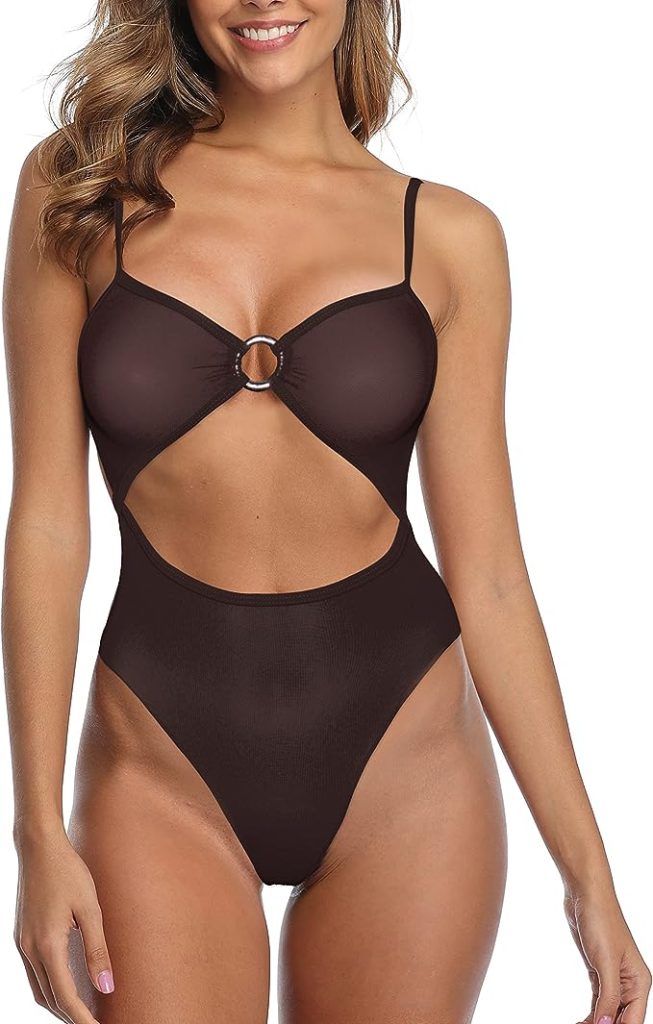
The Evolution of Swimwear Styles
Swimwear has undergone a remarkable evolution throughout history, with each decade bringing its own unique styles and trends. From the modest one-piece bathing suits of the early 20th century to the daring bikinis of the 1960s, fashion has continually pushed boundaries. One recent trend that has caused quite a stir is the rise of see-through bikinis. These provocative swimwear pieces have gained popularity among many beachgoers, but they have also sparked controversy and divided opinions.
A Sensationalized Trend in the Entertainment Industry
The entertainment industry has played a significant role in popularizing see-through bikinis. Celebrities and models have been spotted wearing these revealing swimsuits in music videos, photo shoots, and on red carpets, which has garnered both attention and criticism. With their sheer fabrics and strategic cutouts, see-through bikinis have become an eye-catching fashion statement, often portrayed as a symbol of confidence and sexual liberation. However, this trend has also faced backlash for objectifying women and perpetuating unrealistic beauty standards.
The Empowerment and Body Positivity Aspect
Proponents of see-through bikinis argue that they can be empowering for women, allowing them to embrace their bodies and feel comfortable in their own skin. These swimsuits celebrate body positivity by encouraging women to embrace their curves and show off their unique beauty. Supporters claim that wearing a see-through bikini is a form of self-expression, allowing individuals to break free from societal norms and embrace their personal style. By embracing see-through fashion, women can challenge conventional beauty standards and promote body diversity.
The Debate on Public Decency and Morality
On the other hand, critics argue that see-through bikinis cross the line of public decency and morality. They believe that these revealing swimsuits objectify women, reducing them to mere objects of desire. Some argue that see-through bikinis perpetuate the hypersexualization of women’s bodies, contributing to harmful beauty ideals and creating unrealistic expectations for women. Additionally, opponents of this trend argue that there is a time and place for such revealing outfits, and public spaces like beaches should maintain certain standards of modesty.
The controversy surrounding see-through bikinis raises broader questions about the influence of fashion on society and the limits of personal expression. While some argue that individuals should have the freedom to wear what they desire, others believe that there should be boundaries and guidelines to maintain public decency. This debate speaks to deeper societal issues regarding the objectification of women and the importance of promoting body positivity and inclusivity.
It is essential to recognize that the popularity of see-through bikinis may be a reflection of changing societal attitudes towards sexuality and body image. As conversations around body positivity and self-acceptance gain traction, some argue that wearing see-through bikinis can be a form of reclaiming agency over one’s body. By celebrating their bodies in these revealing swimsuits, individuals can challenge societal norms and embrace their sexuality without shame or judgment.
However, it is crucial to strike a balance between personal expression and public decency. While embracing one’s body is important, it is equally important to respect the boundaries of public spaces and be mindful of the impact of one’s choices on others. Finding a middle ground that allows individuals to express themselves while still upholding societal norms is key.
Ultimately, the rise of see-through bikinis represents a larger conversation about personal expression, societal norms, and the ever-changing landscape of fashion. As with any trend, it is essential to approach it critically, considering the implications and impact it may have on individuals and society as a whole. While see-through bikinis may continue to divide opinions, they undoubtedly contribute to an ongoing dialogue about body image, empowerment, and the role of fashion in shaping cultural attitudes.